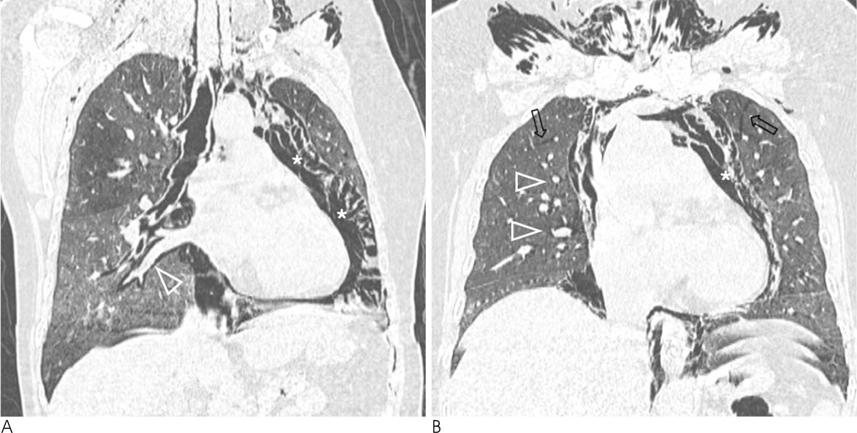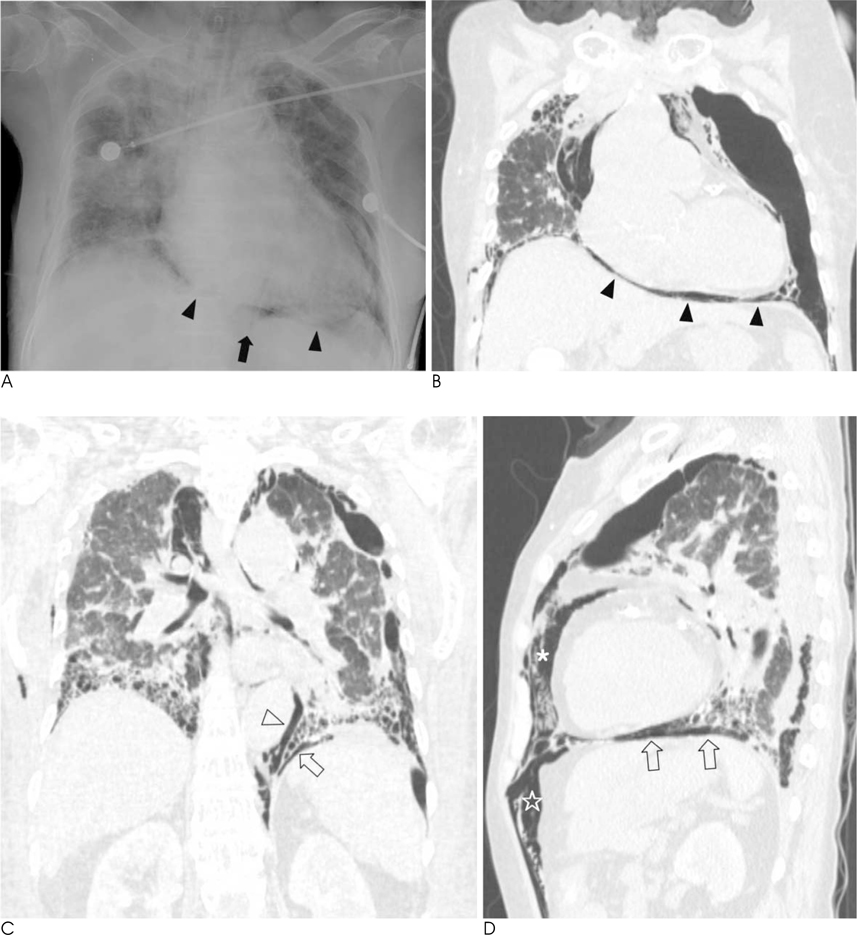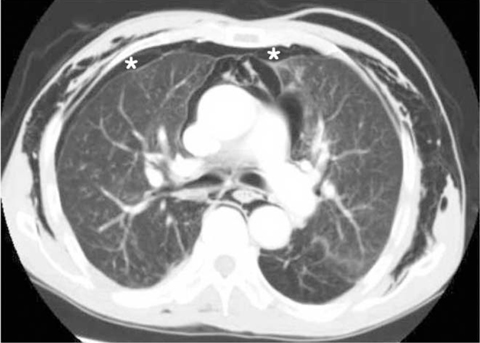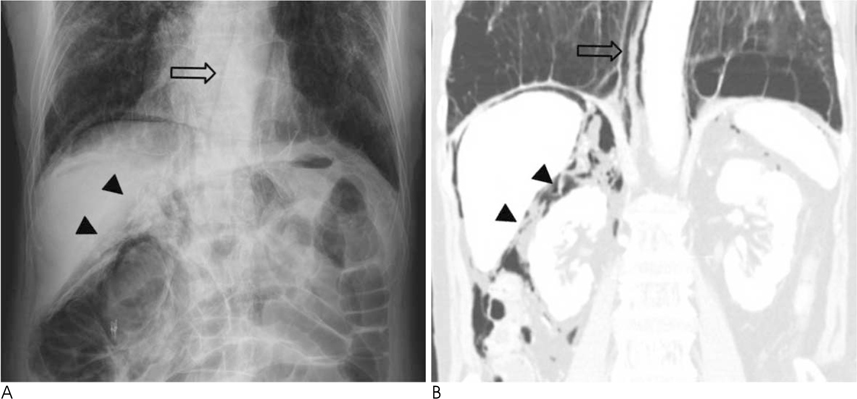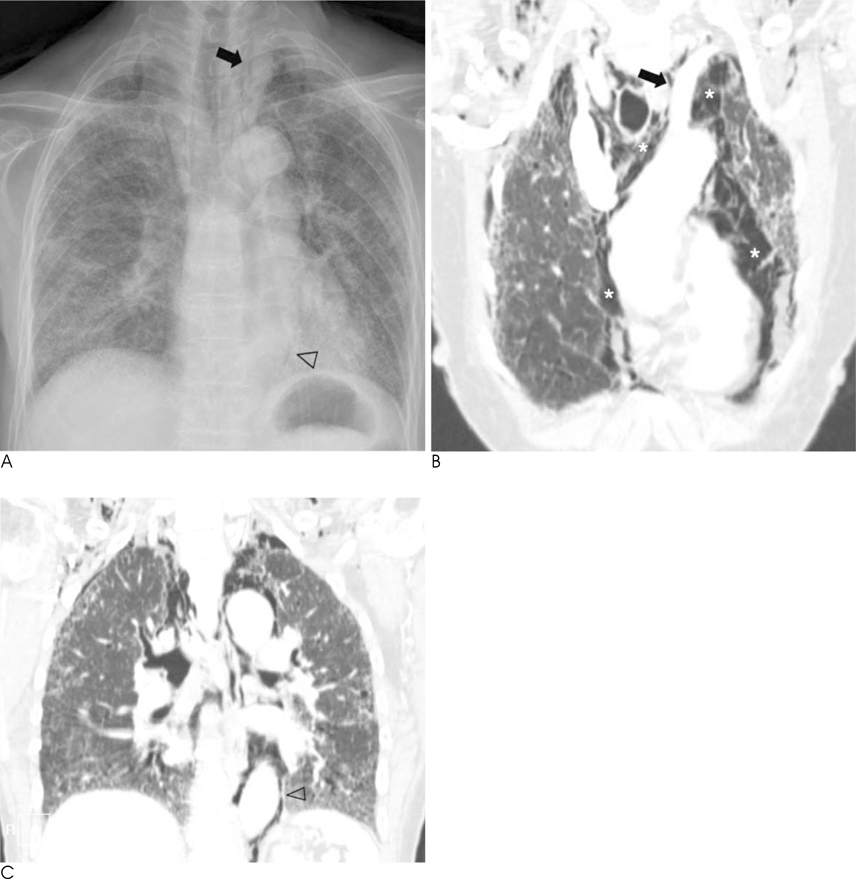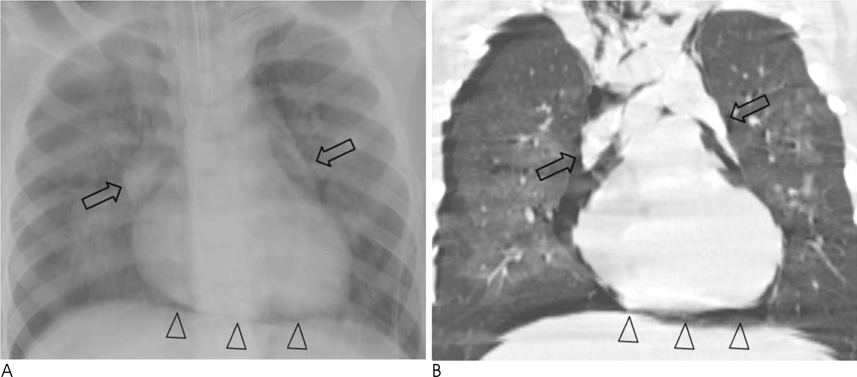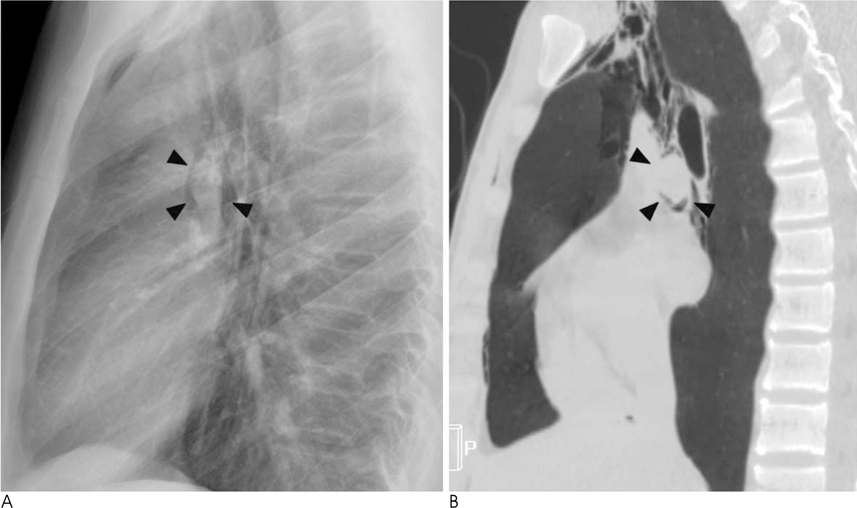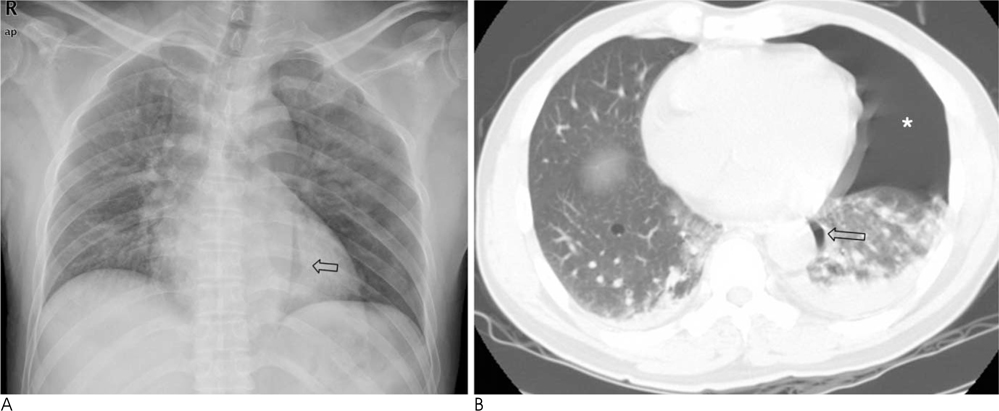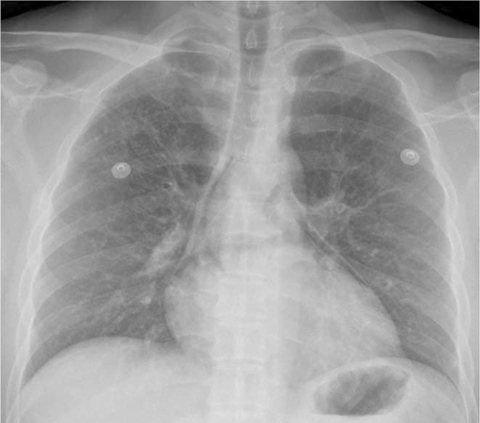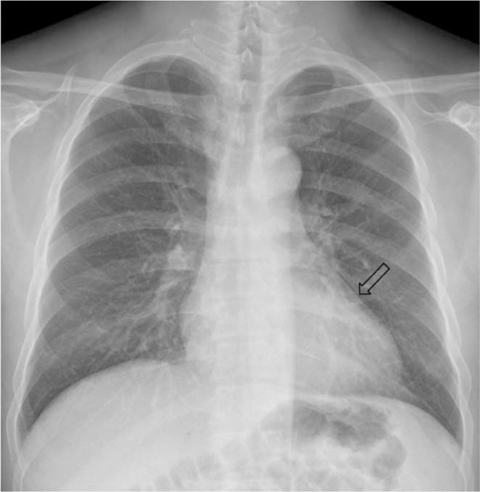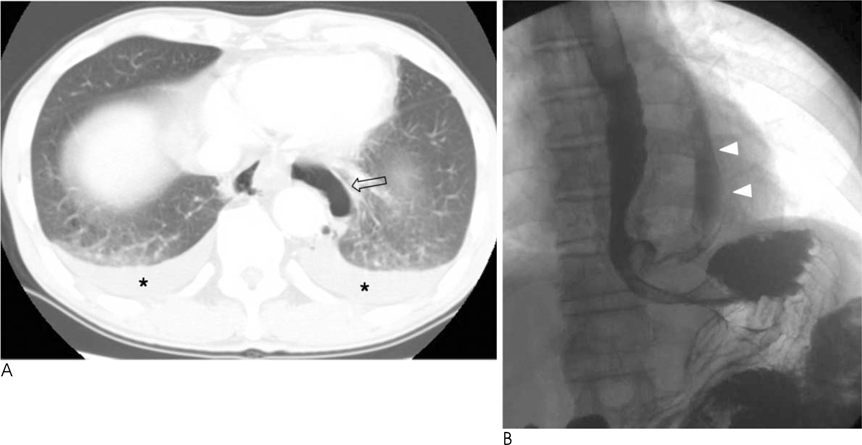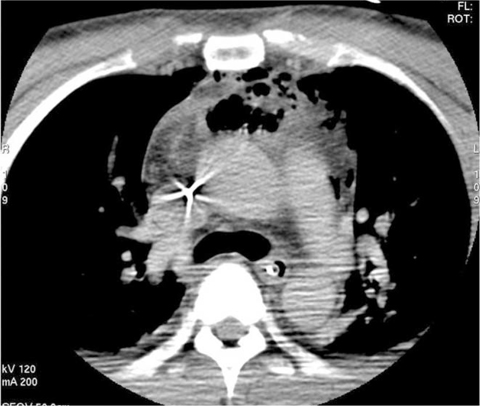J Korean Soc Radiol.
2011 Feb;64(2):157-166. 10.3348/jksr.2011.64.2.157.
Pneumomediastinum on Multidetector CT: The Radiologic Signs and Underlying Disorders
- Affiliations
-
- 1Department of Radiology, Soonchunhyang University Chunan Hospital, Korea. ytokim@scha.ac.kr
- KMID: 2097932
- DOI: http://doi.org/10.3348/jksr.2011.64.2.157
Abstract
- We can see the typical signs of pneumomediastinum on chest radiography and we can also see them on the multiplanar reformatted (MPR) image of multidetector CT (MDCT). MDCT can help to understand the anatomical feature of these signs and differentiate pneumomediastinum from pneumothorax, pneumopericardium and the Mach band effect. MDCT shows the peribronchovascular air, which reveals the Macklin effect, and it can also evaluate the underlying disorders that cause pneumomediastinum. The purpose of this pictorial essay is to inform physicians about the mechanism and anatomical features of pneumomediastinum, and to help them understand the imaging findings and underlying disorders of pneumomediastinum as seen on MDCT.
Figure
Reference
-
1. Macia I, Moya J, Ramos R, Morera R, Escobar I, Saumench J, et al. Spontaneous pneumomediastinum: 41 cases. Eur J Cardiothorac Surg. 2007; 31:1110–1114.2. Bejvan SM, Godwin JD. Pneumomediastinum: old signs and new signs. AJR Am J Roentgenol. 1996; 166:1041–1048.3. Macklin CC. Transport of air along sheaths of pulmonic blood vessels from alveoli to mediastinum: clinical implications. Arch Intern Med. 1939; 64:913–926.4. Jeon KN, Bae K, Yoo JJ, Jung SH, Kang DS. Pneumothorax, Pneumomediastinum and Pneumopericardium: A Pictorial Review. J Korean Radiol Soc. 2004; 50:255–262.5. Bullaro FM, Bartoletti SC. Spontaneous pneumomediastinum in children: a literature review. Pediatr Emerg Care. 2007; 23:28–30.6. Hartley C, Morritt GN. Bronchial rupture secondary to blunt chest trauma. Thorax. 1993; 48:183–184.7. Fujiwara T. Pneumomediastinum in pulmonary fibrosis. Detection by computed tomography. Chest. 1993; 104:44–46.8. Sittipunt C. Paraquat poisoning. Respir Care. 2005; 50:383–385.9. Pierce TB, Razzuk MA, Razzuk LM, Luterman DL, Sutker WL. Acute mediastinitis. Proc (Bayl Univ Med Cent). 2000; 13:31–33.10. Marty-Ane CH, Alauzen M, Alric P, Serres-Cousine O, Mary H. Descending necrotizing mediastinitis. Advantage of mediastinal drainage with thoracotomy. J Thorac Cardiovasc Surg. 1994; 107:55–61.
- Full Text Links
- Actions
-
Cited
- CITED
-
- Close
- Share
- Similar articles
-
- Multiseptated Cystic Pneumomediastinum in a Term Newborn: Cystic and Bubbly Lesion on Chest X-ray
- A Case of Cystic Pneumomediastinum with Thymic Hyperplasia in a Newborn
- Spontaneous Pneumomediastinum on CT: Related Condition and its Clinical Significance
- Pneumothorax, Pneumomediastinum and Pneumopericardium: A Pictorial Review
- Multidetector Row Computed Tomography: 'Principles and Clinical Applications'

